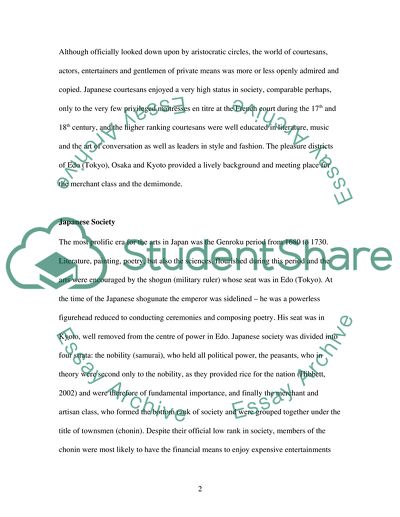Cite this document
(“Floating World in Japanese art history Essay Example | Topics and Well Written Essays - 1500 words”, n.d.)
Floating World in Japanese art history Essay Example | Topics and Well Written Essays - 1500 words. Retrieved from https://studentshare.org/miscellaneous/1561529-floating-world-in-japanese-art-history
Floating World in Japanese art history Essay Example | Topics and Well Written Essays - 1500 words. Retrieved from https://studentshare.org/miscellaneous/1561529-floating-world-in-japanese-art-history
(Floating World in Japanese Art History Essay Example | Topics and Well Written Essays - 1500 Words)
Floating World in Japanese Art History Essay Example | Topics and Well Written Essays - 1500 Words. https://studentshare.org/miscellaneous/1561529-floating-world-in-japanese-art-history.
Floating World in Japanese Art History Essay Example | Topics and Well Written Essays - 1500 Words. https://studentshare.org/miscellaneous/1561529-floating-world-in-japanese-art-history.
“Floating World in Japanese Art History Essay Example | Topics and Well Written Essays - 1500 Words”, n.d. https://studentshare.org/miscellaneous/1561529-floating-world-in-japanese-art-history.


